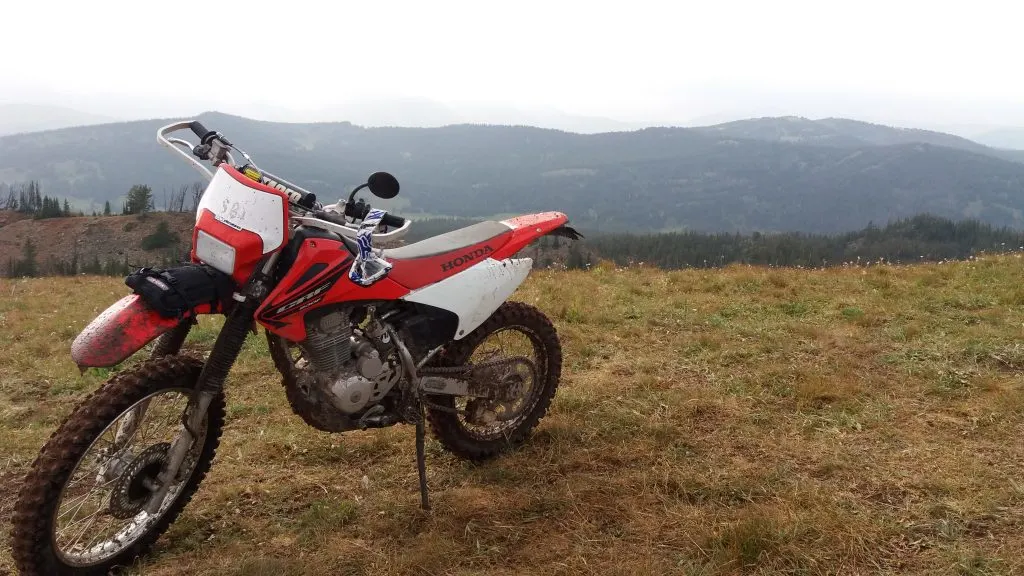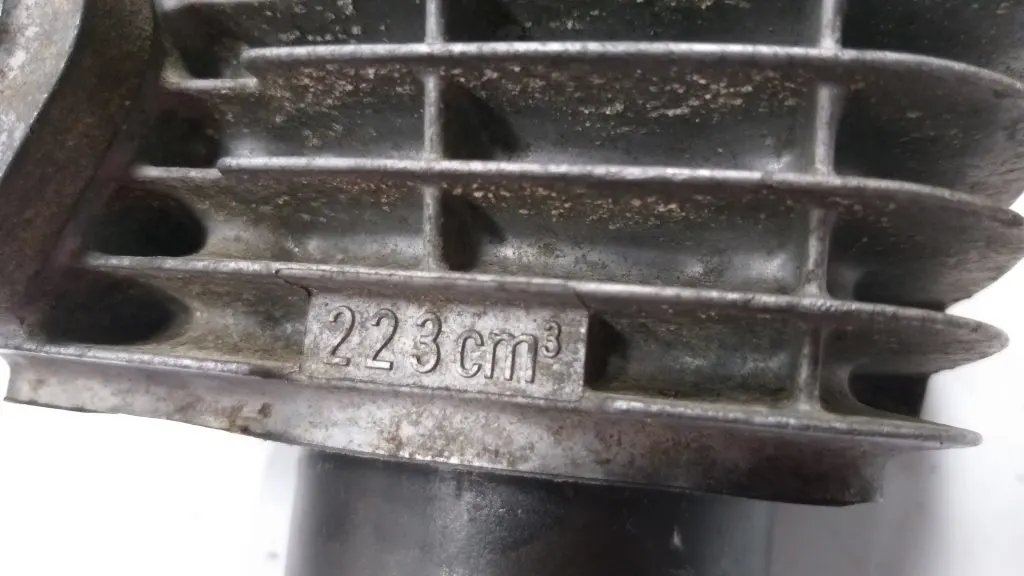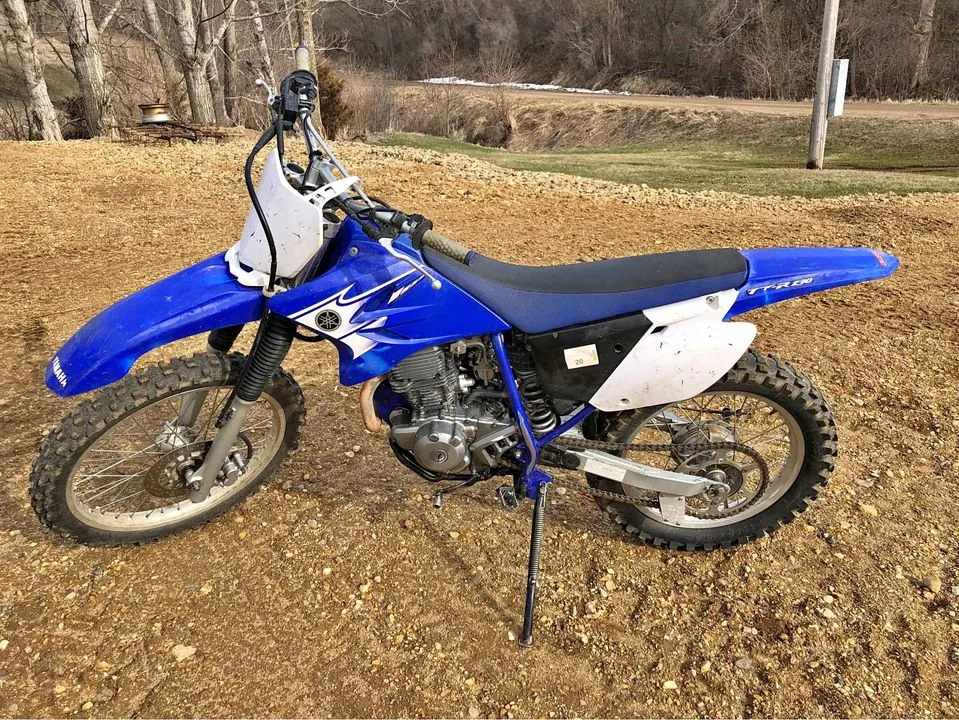Even though the Honda 230 isn’t being sold anymore, the CRF230F vs TTR230 is still a great rivalry and comparison. I want to show you the practical differences between these trail bikes so that you can buy the right dirt bike and get started riding.
Just want a quick answer?
The Honda CRF230F has a slight edge because the engine has more low-end torque and there’s a bigger aftermarket supply to upgrade the power and suspension for hard enduro trail riding.

With that said, they’re both great trail bikes for beginners and casual trail riding because they’re easy to ride, inexpensive to maintain, and they’re both very reliable.
What’s the difference between the CRF230F & TTR230?
They're very similar in specs, but the biggest differences are:
- Engine
- Wheelbase?
- Seat height?
Engine
Probably the biggest difference between the Honda and Yamaha 230 trail bikes are the engine. They both have a 223cc 2-valve engine, but the bore and stroke are quite a bit different.
The CRF230F has a much longer piston stroke, while the TTR230 has a bigger piston bore size.
Okay, what does that mean in simple terms?
The bigger stroke on the Honda means it has more low-end torque and the Yamaha has more mid-range to top-end power. It’s not a significant difference and they’re both easy to ride, but it’s definitely noticeable with stock engines.

I prefer lots of low-end torque as long as it’s smooth, so I like the CRF230 engine, but maybe you want a little more top-end power because you like to rev it out more - go with the Yamaha.
Either way, these are beginner trail bikes that aren’t high performance race machines. You can always modify them later if you want more torque or horsepower.
Both 230’s have a 6-speed transmission that are pretty solid, so not much to compare there. A quick sprocket change can make a big difference in acceleration or top speed.
Suspension
The stock forks and shock on both bikes are very outdated compared to modern technology, but that’s not a bad thing. If you like plush and simplicity, the conventional forks and low-tech shock will be good to start out.
With the right tuner, the stock forks can be re-valved and sprung fairly easily and for cheap to get some better performance.
The CRF230F shock is probably the biggest issue. The rebound is too slow, so it can pack down and rebound too quickly on rough terrain. They’re harder to fix, so upgrading the shock is a little more expensive.
Is this a deal breaker? If you’re a beginner, no. It probably won’t affect your riding until you start riding more aggressively.
Handling
The TTR230 and CRF230F are so close in the handling category that it’s hard to pick a clear winner. With that said, the TTR230 is marginally taller and longer than the CRF 230F.

It’s less than an inch, but this just makes it slightly more stable at higher speeds, while the CRF230F can turn better at lower speeds.
Overall, the difference is so small that it won’t make much difference as a beginner or casual trail riding.
Which dirt bike is right for you?
So, which is the best 230 dirt bike? Honestly, they’re both great and you can’t go wrong with either if you find one in good shape (used). With that said, below are some quick stats to help choose the best dirt bike for you.
You should get the CRF230F if you:
- Want the most low-end torque
- Enjoy modifying and upgrading your toys
- Will be riding at lower speeds
- Find a clean one for cheap
You should get the TTR230 if you:
- Want a better spread of power with enough top-end horsepower
- Will be riding at slightly higher speeds (although it will do great at low speeds too)
- Find a clean one for cheap
How to become a safe & confident rider
Now that you have a good idea of what dirt bike to get, it’s time to learn how to ride it, and I want to help you get started the right way.
Too many beginners learn to ride on their own or have a friend teach them. You can learn some of the basics, but if you’re taking dirt biking seriously and want to stay safe and become a good rider, then you need to learn proper riding techniques to ride with confidence. To get started today, click here to learn how.

